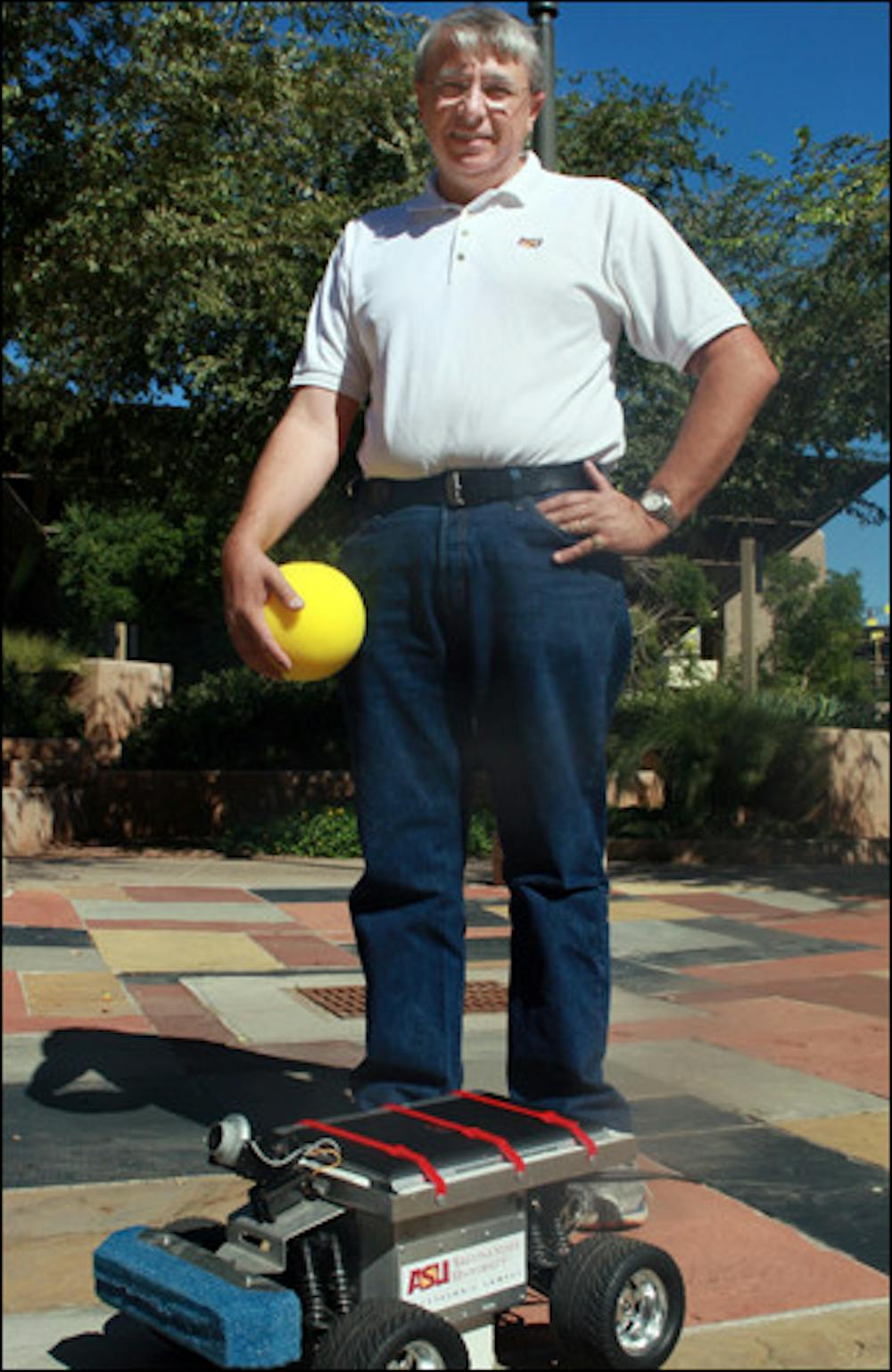Look out, Derek Jeter. ASU researchers have designed a robot capable of fielding baseballs.
Psychology professor Michael McBeath, responsible for the robot’s cognition, action and perception, and associate engineering professor Thomas Sugar created a bionic ballplayer with roughly an .800 fielding percentage.
The catch-bot — as the researchers refer to their creation — looks like a prop from the movie “Short Circuit.” The creation is essentially a laptop computer on wheels, with camera-lens eyes.
The device can move at around 30 mph and track down almost every ball hit within the range of its optical lens.
The catch-bot is programmed to recognize and track specially made balls as they move in the range of its optical lens. The images are then processed by the computer, and the catch-bot is off and rolling.
McBeath, whose own baseball career peaked in little league, said the start date of the catch-bot project is hard to identify, but the collaboration of perception and bionics began about eight years ago.
“Tom Sugar and I began integrating the perception-action theory of catching with mobile robotics around 2000 and published our first robot catching article in 2001,” McBeath said.
The catch-bot’s movements replicate human and animal instincts in terms of the path they take to best perceive a baseball they are attempting to catch, McBeath said.
These instincts are often subconscious in humans and animals, but the catch-bot has been programmed to follow the same path.
The benefit of this research is important in both perception and robotics, McBeath said.
Understanding how the human brain perceives things is important in designing robots in the image of humans.
Sugar agrees that combining the disciplines of robotics and perception has been successful on both fronts.
“On the robotics side, we have instantiated robust perceptual models that allow autonomous interception. On the perception side, we have aided in the understanding and development of perceptual invariant principles," he said.
The rewards of robot technology are not exclusively isolated to sports.
Sugar said designing robots to move like humans our can help people with physical disabilities.
“Understanding how humans locomote is very important in designing robots that will someday assist people in walking,” Sugar said. “My goal is to understand human locomotion and apply it to wearable robotic systems.”
To put the catch-bot’s .800 fielding percentage into perspective, home-run king Barry Bonds — whose talent, according to federal investigators, is also suspected of being created in a lab — has a .984 fielding percentage.
The catch-bot will be spending the off-season rehabilitating in the lab of computer science doctoral candidate Michael Rush.
Rush said he is modifying the processing speed of the camera and on-board computer that will hopefully give the catch-bot a faster reaction time and increase its fielding percentage.
Rush is also trying to give the catch-bot a memory.
“We are using algorithm-based navigation intended to use past experience in catching to assist in the decision making in the path of interception,” he said.
Sugar said the catch-bot is the tip of the iceberg in terms of robotic technology.
"Catch-bot has enjoyed quite a bit of success and media coverage,” he said. “It is just our start in understanding human locomotion.”
Reach the reporter at jaking5@asu.edu




